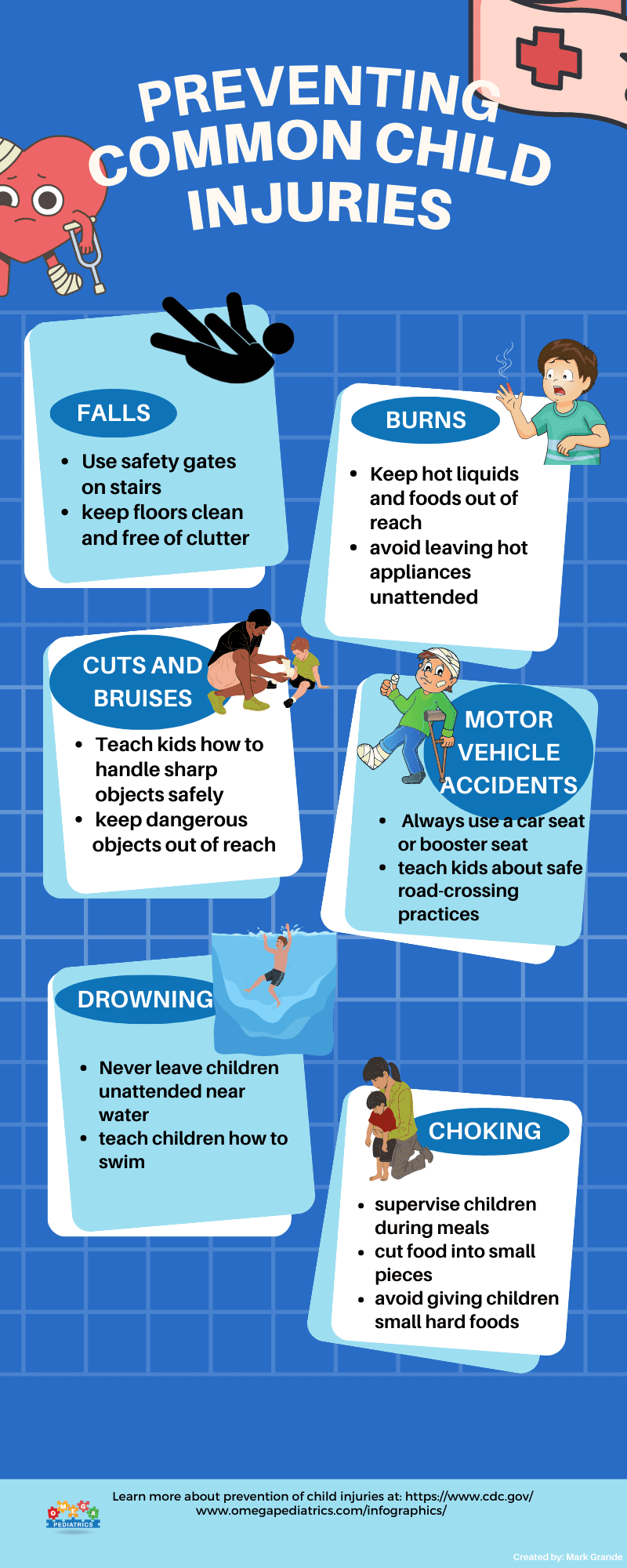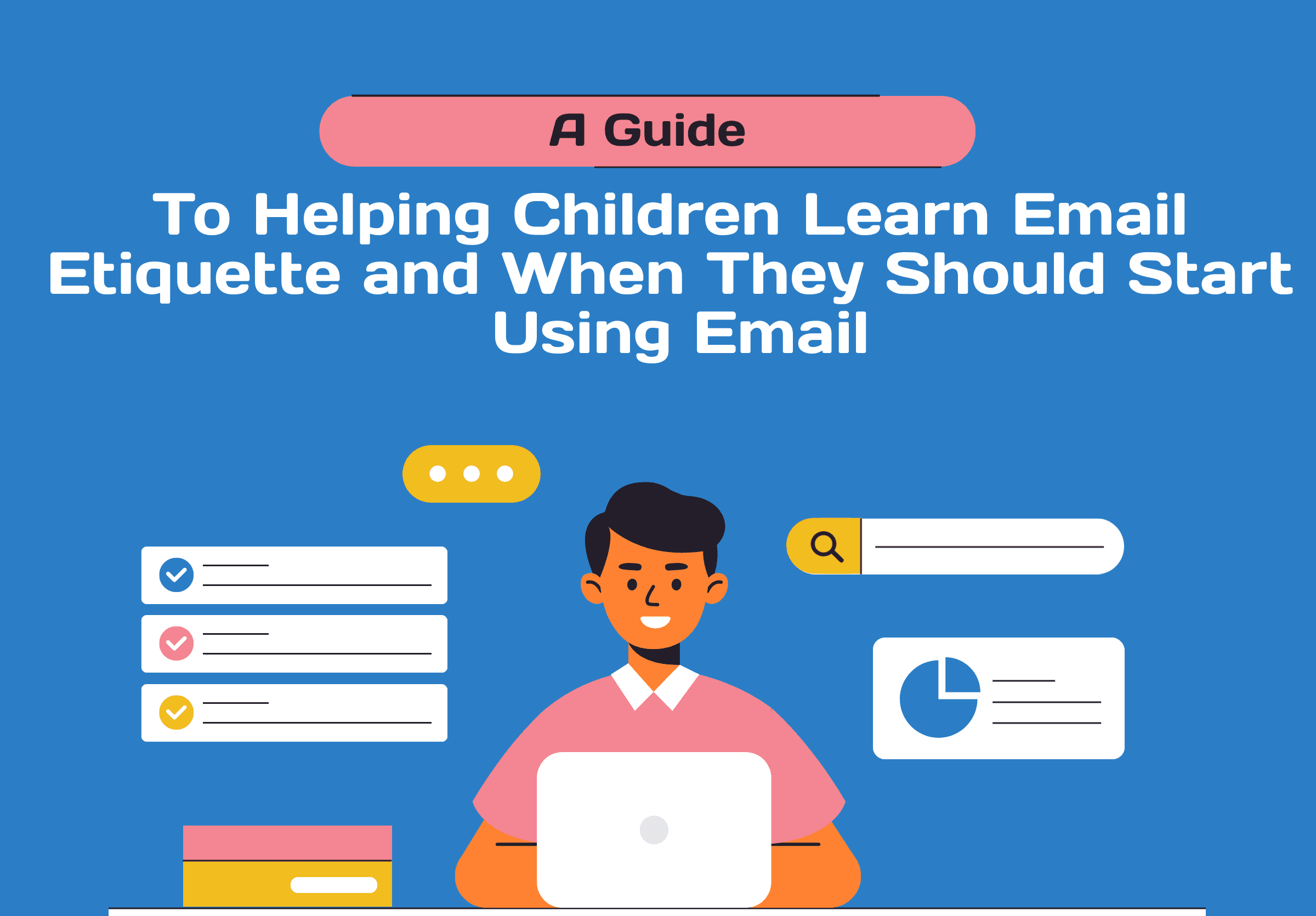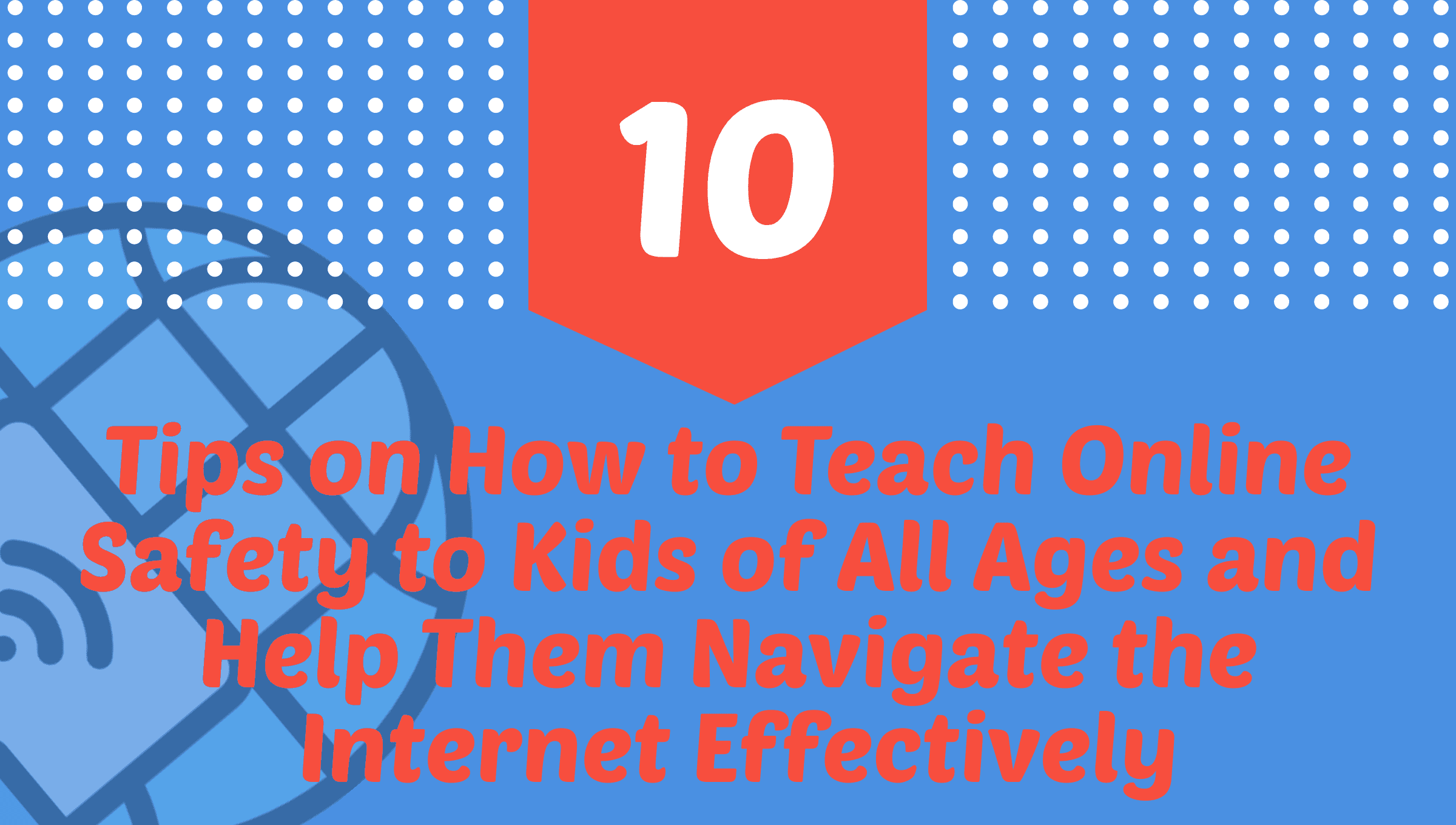Table of Contents

Ensuring the safety and well-being of children is a top priority for parents and caregivers. By implementing preventive measures, we can significantly reduce the risk of common child injuries. Here are additional strategies for preventing various types of injuries:
Falls:
- Use safety gates on stairs: Install sturdy safety gates at the top and bottom of staircases to prevent young children from falling.
- Keep floors clean and free of clutter: Regularly clear floors of toys, loose cords, and other potential tripping hazards to minimize the risk of falls.
Burns:
- Keep hot liquids and foods out of reach: Store hot beverages and food in secure locations, out of a child’s reach, and use caution when handling hot items around children.
- Avoid leaving hot appliances unattended: Ensure that children are supervised when appliances such as stoves, ovens, and hot irons are in use. Turn off and unplug appliances when not in use.
Cuts and bruises:
- Teach kids how to handle sharp objects safely: Educate children about the proper use and handling of sharp objects such as knives, scissors, and tools. Emphasize the importance of adult supervision.
- Keep dangerous objects out of reach: Store sharp objects, medications, cleaning supplies, and other potentially hazardous items in locked cabinets or out of children’s reach.
Motor vehicle accidents:
- Always use a car seat or booster seat: Follow age-appropriate car seat guidelines and ensure children are properly restrained while traveling in vehicles.
- Teach kids about safe road-crossing practices: Educate children on pedestrian safety, including looking both ways before crossing the road, using designated crosswalks, and obeying traffic signals.
Drowning:
- Never leave children unattended near water: Children should always be supervised when near water, including bathtubs, swimming pools, lakes, or any other bodies of water.
- Teach children how to swim: Enroll children in age-appropriate swimming lessons to enhance their water safety skills and confidence in the water.
Choking:
- Supervise children during meals: Ensure that young children are closely monitored while eating to prevent choking incidents.
- Cut food into small pieces: Cut food into appropriate sizes, especially for young children, to reduce the risk of choking.
- Avoid giving children small hard foods: Be cautious with foods such as whole grapes, nuts, popcorn, and candies, as they can pose a choking hazard for young children.
By implementing these preventive measures, parents and caregivers can create a safer environment for children, reducing the risk of common injuries. It is important to regularly evaluate and update safety practices to address the changing developmental stages and needs of children as they grow.
Emergency Preparedness:
While preventive measures are crucial, preparing for emergencies is equally important to ensure the safety of children. Emergencies can range from natural disasters like earthquakes or floods to medical emergencies within the household. Here are key strategies for emergency preparedness:
- Develop an Emergency Plan:
- Create a comprehensive emergency plan that includes evacuation routes, emergency contacts, and a designated meeting point.
- Practice emergency drills regularly, so children are familiar with the procedures.
- Maintain Emergency Supplies:
- Keep a well-stocked emergency kit that includes first aid supplies, non-perishable food, water, flashlights, and essential medications.
- Regularly check and update the emergency kit to ensure all supplies are in good condition.
- Educate Children About Emergency Procedures:
- Teach children how to call for help in case of emergencies and make sure they know important contact numbers.
- Explain the importance of staying calm during emergencies and following instructions.
- Communication Plan:
- Establish a communication plan with family members, neighbors, and the school to stay informed about each other’s well-being during emergencies.
- Ensure that everyone in the household is aware of the plan and understands their roles.
- Stay Informed:
- Stay informed about potential hazards in your area, such as severe weather patterns or local threats, and adapt your emergency plan accordingly.
- Monitor weather alerts and emergency broadcasts to stay updated on current situations.
While we hope to never encounter emergencies, being well-prepared can make a significant difference in ensuring the safety of children and the entire family.
Conclusion
Creating a secure environment for children involves a combination of preventive measures and preparedness strategies. By addressing potential risks through the prevention of falls, burns, cuts, motor vehicle accidents, drowning, and choking, parents and caregivers lay a strong foundation for child safety. Moreover, incorporating emergency preparedness into the safety plan adds an extra layer of protection in unforeseen circumstances.
Regularly reassessing and updating safety practices is essential as children grow and their needs evolve. With a proactive approach to safety, parents and caregivers contribute to fostering an environment where children can thrive without unnecessary risks. Ultimately, the well-being of children is a collective responsibility, and by staying informed and vigilant, we can create a world where children can explore, learn, and play safely.
FAQ
How can I prevent falls at home?
Install safety gates on stairs and keep floors free of clutter to minimize the risk of falls for young children.
What measures can I take to prevent burns?
Store hot liquids and foods out of reach, supervise children around hot appliances, and ensure they are turned off and unplugged when not in use
How do I reduce the risk of cuts and bruises for my child?
Teach children how to handle sharp objects safely and store dangerous items like knives and cleaning supplies out of their reach.
What can I do to prevent motor vehicle accidents?
Always use a car seat or booster seat according to guidelines and educate children on safe road-crossing practices.
How can I keep my child safe from drowning?
Never leave children unattended near water and enroll them in swimming lessons to enhance their water safety skills.



